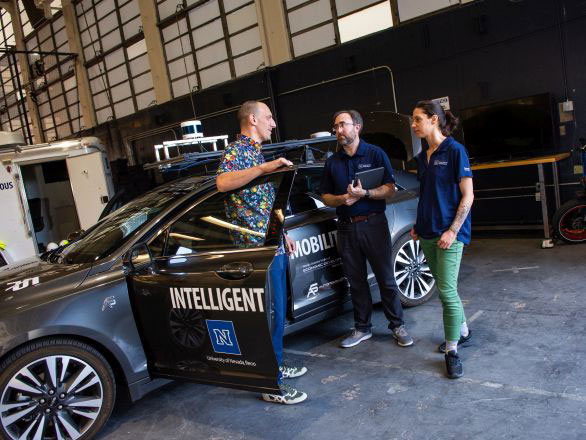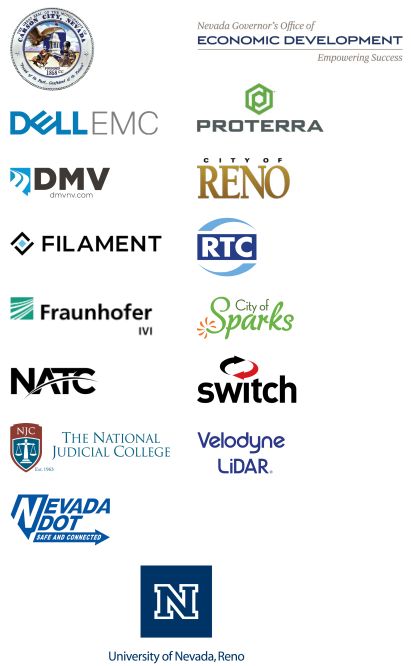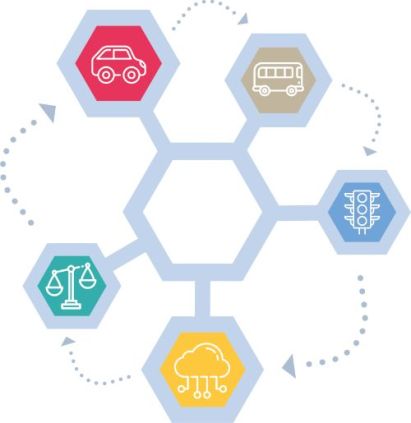Intelligent Mobility

Solutions for safe, clean and efficient transportation
Safe, clean and efficient mobility is a foundation for sustainable economies and communities. The University of Nevada, Reno’s Intelligent Mobility initiative brings together researchers, citizens, ideas, projects and resources to meet this grand challenge and contribute to the vibrant and smart communities of our future.
Intelligent Mobility is strengthened by its setting. Nevada’s entrepreneurial spirit is spurring innovation, growing tech-based industries and contributing to a more resilient economy. The State of Nevada – with the support and commitment of its research universities, industry and startups – has established itself as a premier location for innovative vehicle and transportation technologies.
Expertise, Partnership, Passion

This pioneering effort builds on the expertise of a multidisciplinary group of University researchers in advanced autonomous systems, computer science and information technology, synchronized transportation, robotics, geography, social psychology and judicial studies.
Joining the University team is a coalition of public and private stakeholders, actively participating in the research and development. From governmental organizations to global brands, the coalition brings an impressive breadth of expertise and global perspective to Intelligent Mobility.
Living Labs: Open, Innovative Testing
Intelligent Mobility tests synchronized mobility concepts in complex and real-world urban, suburban and rural environments. In these Nevada Living Labs, researchers and partners are refining technologies and collecting data aimed at making transportation more efficient, sustainable and safe.
Intelligent Mobility will be defined by its contribution to transportation safety, reductions in fuel consumption and emissions, commercialization of new technologies, business and workforce development, and ease of mobility.
In Nevada’s real-world Living Labs, researchers and partners are testing, developing and refining systems in which vehicles sense their environment and communicate with other vehicles, infrastructure and people. Through a fiber optic/microwave network and high performance computing capability, the project studies positioning and orientation of subject vehicles, pedestrian and cyclist behavior, and coordination of multiple vehicles and traffic control systems.
Intelligent Mobility Programs

Autonomous Car
The hybrid-autonomous-vehicle features a unique software configuration that improves upon existing artificial intelligence models by using social intelligence and a multi-sensor approach to react more like a human driver.
Synchronized Mass Transit
An electric bus – manufactured by Proterra, operated by the Washoe County Regional Transportation Commission and instrumented with a fusion of sensors and GPS-denied localization – collects data to assess mass-transit routes and the feasibility of mass-transit automation in city segments with a connected infrastructure.
Connected Infrastructure
A web of interconnected LiDAR, DSRC sensors and traffic-signals detects and tracks pedestrians, cyclists and traffic, and communicates information to connected and autonomous vehicles traveling throughout the Living Labs.
Communication Network and Data Collection
A fiber optic and microwave network links vehicles and infrastructure, and the vital information generated is processed, via secure network, through Pronghorn, the University’s high performance computing system.
Socioeconomics and Legal Aspects
Surveys and market research are being used to assess the socioeconomic impacts. Legal implications of autonomous and connected-vehicle usage also are being evaluated by teams of judges and legal scholars.
Contact
Intelligent Mobility is facilitated by the Nevada Center for Applied Research.